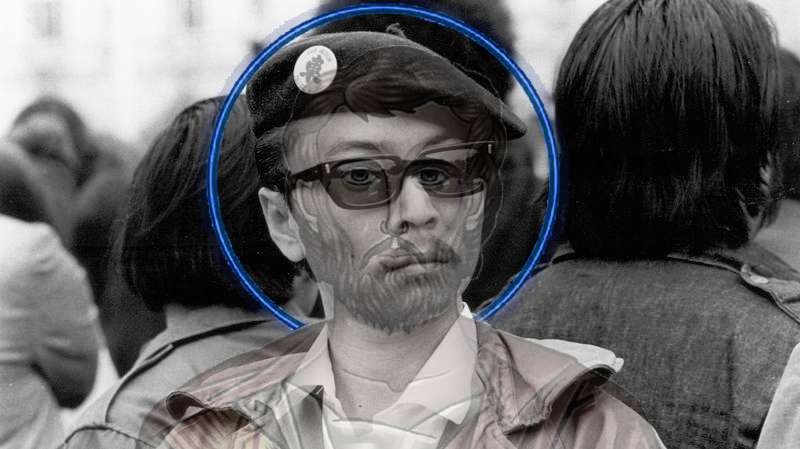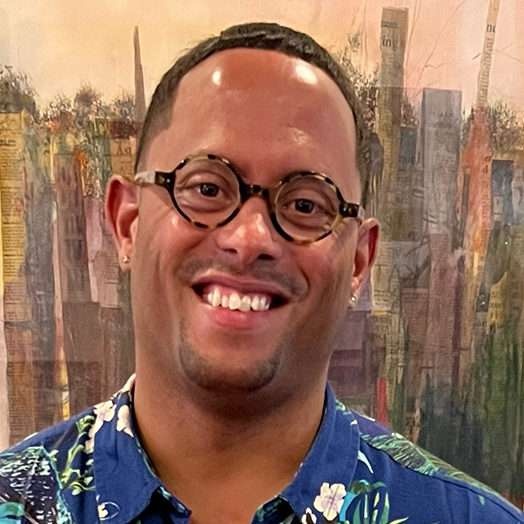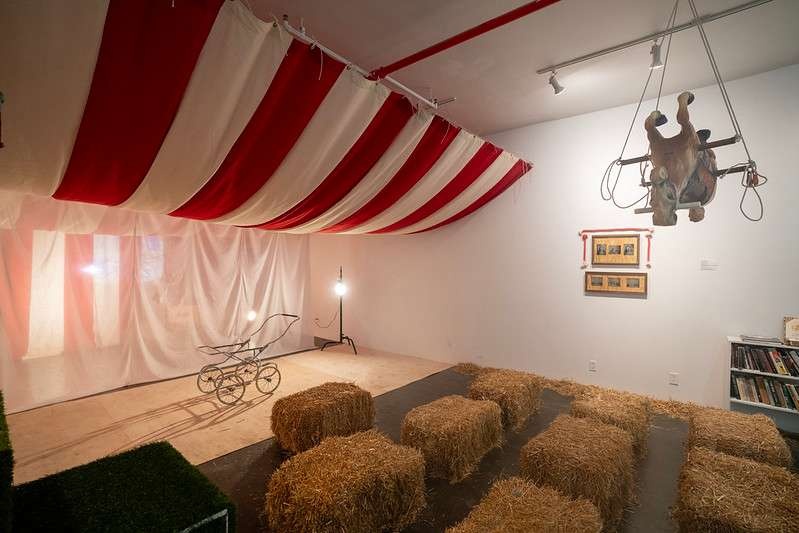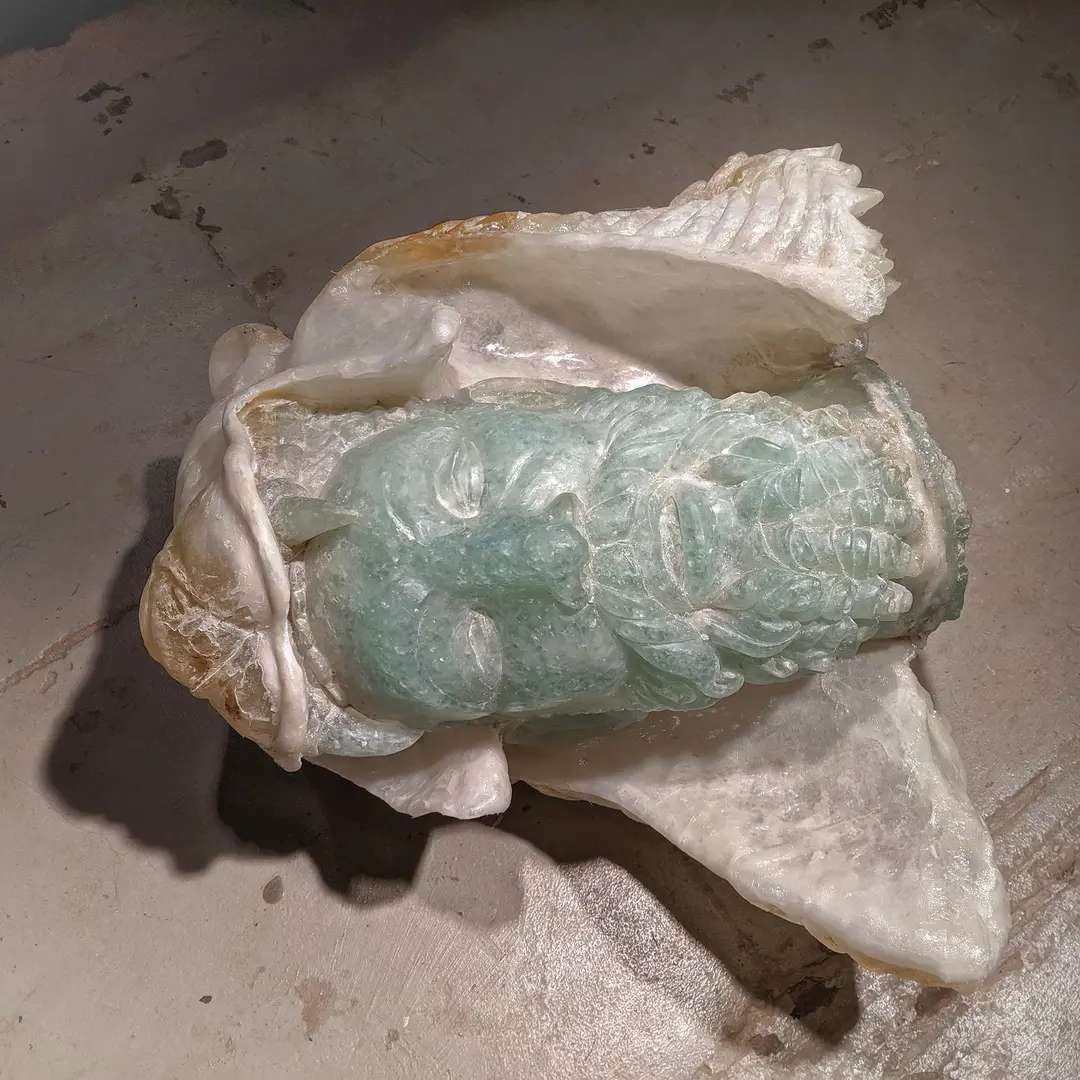Dynasty and Disruption: E.t. Chong’s Queer/trans Api Aesthetics of Intervention
Che Gossett
Adorning the walls of the Recess exhibition space is a photo of a landscape that, when you look closer, is two: one grid of the architecture of a prison camp superimposed on another. Time is folded here, the distance between the now (the violence of the Trump regime and its signature concentration camps) and then (Japanese internment during World War II) collapses and instead all we can see is the historical continuity between the two. How can there be temporal and social progression when the violence of the past inheres in the present? E.T. Chong’s provocative and stirring work Slayasian Dynasty, created during his residency, gets at the core of political desire and interrogates the illusions of safety and political progress while raising questions about the politics and aesthetics of solidarity.


Archival photo of a Japanese internment camp located on the border in Texas–overlayed with an image of the same exact camp– which today is being used to inhumanely detain immigrant families.
Edited image by E.T. Chong
The exhibition is an assemblage of genres and aesthetic forms—from photography, to needle play demos, to porn and classical music, workshops and curator talks—that, rather than splitting aesthetics and politics, shows us how they are imbricated and intimately related. With his timeline that surrounds the space, the exhibit is enclosed by the historical coordinates of colonialism and racial slavery and their afterlives in the Americas, Chong brings to the surface a parallel temporality that haunts the liberal notion of temporality as linear and progressive. He provides the viewer with a contra-temporality and counternarrative by turning the gallery, in the vein of his discussion with Margaret Lee of 47 Canal, into a space of what Stefano Harney and Fred Moten term “study.” Study, according to Moten and Harney is “what you do with other people” [1] and, as we see in the strategy of the timeline—“the sabotage of information.”[2] Chong transforms the gallery into a space of study, sabotage, and contra-institutionality.
Chong transforms the gallery into a space of study, sabotage, and contra-institutionality.To think of aesthetics as political is to be indebted to the aesthetics of the Black radical tradition and Chong’s work emerges out of his own politicization process growing up in Los Angeles, where Chong remembers the LA uprising and protests against the vicious anti-black police violence that Rodney King survived. It was this flashpoint that shaped his political consciousness and from which he questions community and solidarity and the role of art, aesthetics, and the gallery space in political struggle.
Following the outrage and protests against the Dana Schutz painting of Emmet Till at the Whitney biennial, [3] Chong became engaged with other Asian Pacific Islander (API) curators and artists who were thinking about the role of art in social movements on the one hand and about the relationship of the artist to the gallery and exhibition space on the other and how to interrupt and resist the organizing logics of anti-blackness and racial liberalism.
In Slaysian Dynasty, Chong wants to trouble any narrative of purity, the notion that so-called “white passing” Asian Americans don’t internally grapple with the underside that in the form of fetishization and internalized phobias, as well as the convenient fiction of a non-compromised allyship, which is dramatized in the photo of Richard Aoki, Japanese American member of the Black Panther Party, who was posthumously revealed to be an FBI informant. Chong’s work is invested in a form of critique that exposes the limits of the coherence of community and belonging and instead forces us to re-think community through aesthetic textures that resist flattening.


Image of the apostle judas overlayed onto Richard Aoki, Japanese American member of the Black Panther Party, who was posthumously revealed to be an FBI informant.
Edited image by E.T. Chong
Instead of a smooth surface of political coherence of queer/trans API community that is readily digestible to white and cisgender publics and media, instead we are left with conceptual knots and aporias, mounting feelings of dissonance, tension and incongruence that puncture the discursive security of queer and racial liberalism. When not energizing outrage and galvanizing through study, Chong’s work explores the unresolved and what Jean Luc Nancy calls the “inoperative community.” [4] than a satisfactory feeling of psychic catharsis or closure, Chong’s asks us to sit and linger with ethical quandaries and meta-political questions: What is the relationship between politics and fantasy? Is desire a cause for celebration, or despair? Slayasian refuses to cooperate, it instead opts for an aesthetic praxis that refuses a form of aesthetics that would subtract itself from the struggle and instead shows how art is a site of struggle and produced embedded in social movements. This show has huge relevance in the moment when the protests forced change at the Whitney [5] and when artists are thinking about the political economy of racial capitalism and the commodification of artworks as aesthetic objects in the museum and, for Chong, the space of the gallery as well.


6 Dec 1964, Los Angeles, California, USA — Witness and alleged protitute Elisa Boyer, wearing a disguise, testifies during the Coroner’s Inquest of the murder of soul singer Sam Cooke.
Edited Image by E.T. Chong.
Finally, Chong is interested on the one hand in how fantasy and queer desire are mediated by white supremacy. This is seen especially in the final instatiation of his residency, a performance on bottomhood that involved erotic energy of porn performers alongside traditional music and his own live tattooing of the Han symbol on his face, being marked by “a hatred of injustice” but also by an affective charge without English equivalent that also is supposed to designate a type of racial melancholy: “It’s a blockage, something that’s tangled up and cannot be untied.” [6]
Yet Chong’s investment is not only in focusing exclusively on the violence either experienced or internalized by queer/trans people of color but also in visioning and fostering alternatives that center pleasure, joy, desire and play, even as these glimmers of sociality and cruising are never outside of the broader context of white supremacy. Toward this end, Chong held workshops that used play and pleasure, one on piercing and needle play and another on decolonizing porn, to speak to the ways that queer/trans of color communities navigate and cruise dystopia.
While sanctuary from the very violence that Chong’s art alerts us to is never fully possible, his work demonstrates a commitment to an aesthetic practice that is also a praxis. Chong brought into the space of the gallery queer/trans activists and artists and curators and this blur of the supposed boundaries between activist and artist means that the delineation of the two falls away in the moment. The play of temporality and historicity in Chong’s work happens not only at the epic scale of the grand narrative of progress he presents and intervenes upon, but also is present in the minor duration of his workshops. While on the one hand Chong is critiquing political desire, he is also cultivating and recognizing the legitimacy of other political emotions, fantasy, and forms of political intimacy within queer/trans communities of color; the legitimacy of the affective power of being in a qtpoc space that centers desire in all of its excess and complications.
Footnotes
About the artist
Che Gossett
Board Member & past Critical Writer


Che Gossett is a Black non binary writer and critic. They are currently associate director of the Center for Research in Feminist, Queer and Transgender Studies at the University of Pennsylvania and a 2024-2025 Mellon digital humanities fellow at the Penn Price Lab. Prior to this, Che was a postdoctoral scholar at Columbia Law School and a visiting fellow at Harvard Law School. Currently Che is finishing two manuscripts, the first being a political and intellectual biography of queer Asian American AIDS activist Kiyoshi Kuromiya that critically inhabits his archive and puts the register of life writing in contact with the fields of medical and digital humanities, queer/trans studies, literary studies, and Black studies. The second book, emerging out of their dissertation, theorizes the ways in which abolition is activated in Black contemporary art.
Explore/Archive
See allOctober 2025
streamlined reflections, courtesy of noise canceling headphones
Gabrielle Rucker
Gabrielle Rucker reflects on the radical intimacy and auditory life at the heart of Deli Radio
July 2025
Tell My Jockey: CUNTRY’s Discourse From the Horse’s Mouth
Ericka Pérez
Assembly fellow Ericka Pérez reflects on clowning, resistance, and CUNTRY’s radical refusal to perform.
April 2025
The Second Head of Hercules: Art and Resistance Through Four Years of Upheaval
Shakeem Floyd
written in conjunction with artist Onyedike Chuke's Session x Assembly project, The Forever Museum Archive: Circa 2020_An Object





